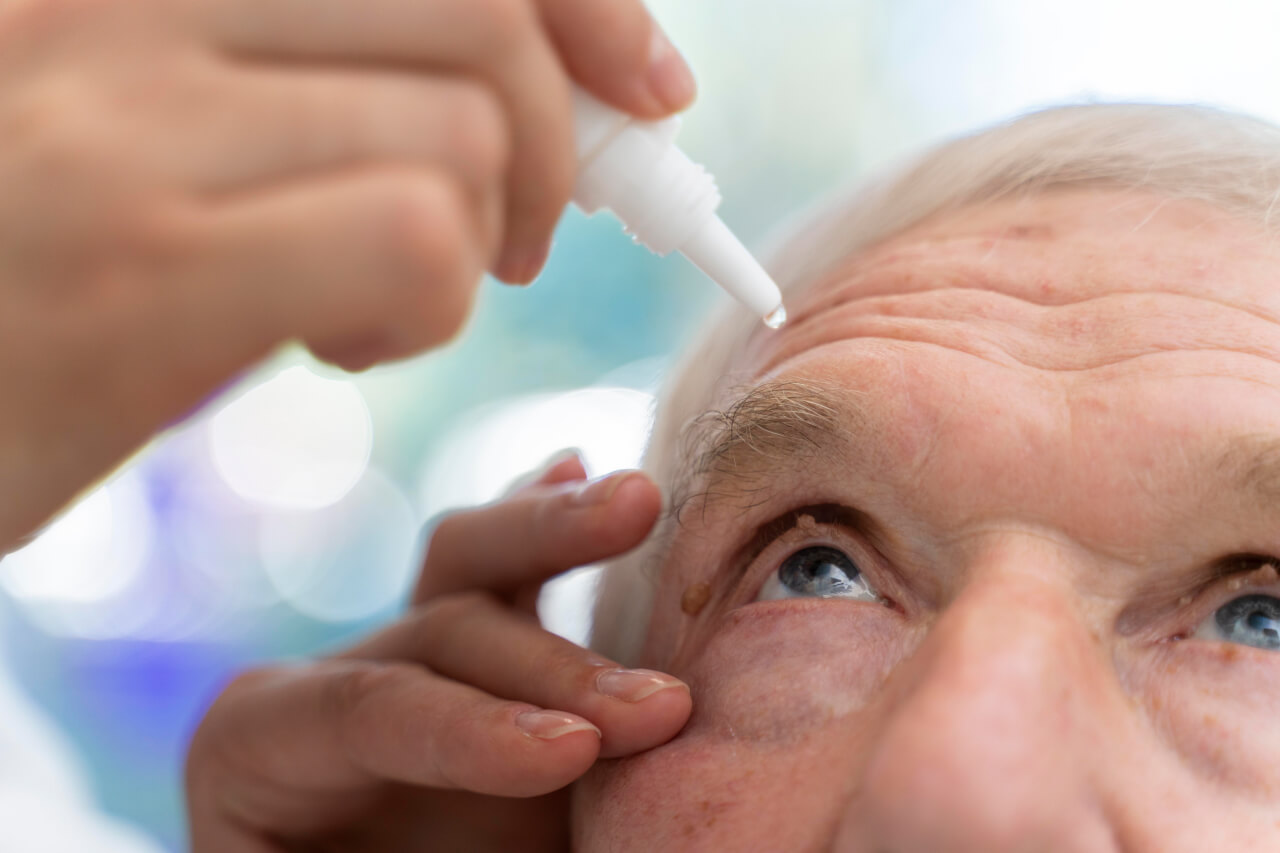Today, we’re diving deep into the heart of two health superheroes—Diabetes and Glaucoma.
Picture this as your ultimate guide, your go-to source for everything you need to know about the dynamic duo.
So, why the focus on Diabetes and Glaucoma, you ask?
Well, these two aren’t just health buzzwords; they’re the main characters in a health saga that affects millions.
Grab a cup of tea, cozy up, and join me on this blog journey where we unravel the essential insights about Diabetes and Glaucoma.
Diabetes disrupts the body’s ability to process blood sugar, elevating the risk of various eye conditions, such as glaucoma.
Insulin, a crucial hormone, facilitates the absorption of sugar from food into the body’s cells for energy utilization.
In diabetes, the body either inadequately produces insulin or fails to use it effectively, complicating blood sugar management and potentially impacting eye health.
Glaucoma constitutes a cluster of eye diseases that inflict damage on the optic nerve located at the back of the eye.
Resulting in potential vision loss and blindness, glaucoma poses a significant threat.
This article delves into the correlation between diabetes and glaucoma.
Exploring risk factors, potential symptoms, and available treatment options, we aim to unravel the intricate connection between these two health concerns.
In the vast landscape of human health, uncovering the intricate connections between seemingly disparate conditions often unveils fascinating insights.
The interplay between glaucoma and diabetes, two prevalent health concerns, serves as a compelling case study.
In this comprehensive exploration, we embark on a detailed journey to unravel the complex web that binds these conditions, shedding light not only on their individual complexities but also on the nuanced ways in which they intersect.
By the end of this enlightening journey, readers will gain a profound understanding of the symbiotic relationship between glaucoma and diabetes.
Types of Glaucoma
Primary Open-Angle Glaucoma (POAG):
The most common type of glaucoma, POAG occurs when the drainage angle of the eye becomes less efficient over time, leading to increased intraocular pressure.
Characteristics: Typically develops gradually without noticeable symptoms until advanced stages.
Angle-Closure Glaucoma:
This type results from the abrupt closure or narrowing of the drainage angle, causing a rapid increase in intraocular pressure.
Characteristics: Can manifest suddenly with symptoms such as severe eye pain, headache, blurred vision, and nausea.
Normal-Tension Glaucoma
In this type, optic nerve damage occurs despite intraocular pressure within the normal range.
Characteristics: The exact cause is not fully understood, and individuals may experience visual field loss without apparent elevation in eye pressure.
Secondary Glaucoma
Secondary to other eye conditions or systemic diseases, this type of glaucoma may result from trauma, inflammation, or tumor presence.
Characteristics: Treatment involves addressing the underlying cause, and symptoms vary based on the associated condition.
Congenital Glaucoma
Description: Present at birth, congenital glaucoma is often due to improper development of the eye’s drainage system.
Characteristics: Symptoms include excessive tearing, light sensitivity, and cloudiness in the cornea. Early diagnosis and intervention are crucial for optimal outcomes.
Pigmentary Glaucoma
Pigment particles from the iris accumulate in the eye’s drainage system, leading to increased intraocular pressure.
Characteristics: Typically affects younger individuals, and symptoms may include blurry vision, especially after exercise.
Exfoliative Glaucoma
Characterized by the presence of exfoliation material on the lens and other eye structures, leading to increased intraocular pressure.
Characteristics: Associated with aging, and individuals may experience a gradual onset of symptoms.
Traumatic Glaucoma
Description: Resulting from eye injuries, traumatic glaucoma can occur immediately or develop gradually over time.
Characteristics: Symptoms may include pain, blurred vision, and increased intraocular pressure due to the injury.
Neovascular Glaucoma
Occurs when abnormal blood vessels grow on the iris, blocking the eye’s drainage system.
Characteristics: Often associated with underlying conditions such as diabetes and may lead to severe vision loss.
Risk Factors and Symptoms
Risk Factors
Diabetes Diagnosis:
Individuals diagnosed with diabetes, especially those with prolonged uncontrolled blood sugar levels, face an increased risk of developing glaucoma.
Age:
Advancing age is a common risk factor for both diabetes and glaucoma.
The likelihood of these conditions tends to rise as individuals grow older.
Family History:
A familial predisposition to diabetes or glaucoma elevates the risk for an individual.
Genetic factors can play a significant role in the development of these conditions.
Ethnicity:
Certain ethnic groups, such as African-Americans and Hispanics, have a higher susceptibility to both diabetes and glaucoma, emphasizing the importance of tailored screenings.
High Blood Pressure:
Hypertension, often associated with diabetes, is a shared risk factor for glaucoma.
Elevated blood pressure can contribute to optic nerve damage.
Obesity:
Excess body weight, a common factor in diabetes, is also linked to an increased risk of glaucoma.
Maintaining a healthy weight is crucial in managing these risks.
Smoking:
Tobacco smoke is a known risk factor for diabetes and has also been associated with an elevated risk of developing glaucoma.
Quitting smoking can positively impact overall health.
Inactivity:
Sedentary lifestyles contribute to the risk of both diabetes and glaucoma.
Regular physical activity is a protective factor against these conditions.
Symptoms
Blurred Vision:
Diabetes and glaucoma can both cause blurred or fluctuating vision, indicating potential complications.
Any sudden changes should be promptly addressed.
Increased Intraocular Pressure:
Elevated pressure within the eyes, a hallmark of glaucoma, may not present noticeable symptoms initially but can be detected through regular eye examinations.
Eye Pain or Discomfort:
Individuals with advanced glaucoma may experience eye pain or discomfort.
This could indicate increased pressure within the eye.
Difficulty Focusing:
Diabetes can contribute to changes in the lens of the eye, affecting focus.
Difficulty in focusing may signal the need for an eye examination.
Frequent Changes in Prescription Glasses:
Both diabetes and glaucoma can lead to frequent changes in vision, necessitating adjustments in prescription glasses.
Regular eye check-ups are crucial.
Peripheral Vision Loss:
Glaucoma often results in the gradual loss of peripheral vision.
This symptom may go unnoticed until it reaches an advanced stage.
Increased Thirst and Urination:
Uncontrolled diabetes may lead to increased thirst and urination.
Monitoring these symptoms alongside regular eye check-ups is essential.
Understanding these risk factors and symptoms is pivotal in proactively managing diabetes and glaucoma.
Regular screenings and timely medical intervention can significantly mitigate the impact of these conditions on eye health.
Connection between Diabetes and Glaucoma
Diabetes has the potential to elevate blood sugar levels, initiating a cascade of effects that harm the delicate blood vessels in the retina—the light-sensitive layer at the back of the eye.
This impairment, clinically termed diabetic retinopathy, is characterized by damaged blood vessels that may swell and leak.
As a consequence, vision may become blurred, and the blood flow to the retina may diminish.
Diabetic retinopathy stands as a primary cause of blindness among working-age adults.
Furthermore, this retinal damage can lead to the growth of abnormal blood vessels within the retina, obstructing the natural drainage of fluid from the eye.
This blockage subsequently raises the pressure within the eye, potentially resulting in damage to the optic nerve—a condition identified as glaucoma.
Scientific studies underscore the association between diabetes and an increased risk of developing glaucoma.
Compelling evidence suggests that individuals with diabetes face almost double the risk of developing glaucoma compared to those without the condition.
Risk Factors
The duration of Diabetes and Glaucoma significantly amplifies the likelihood of an individual developing diabetic retinopathy.
Additionally, several other risk factors elevate the chances of diabetic retinopathy onset, including:
- Elevated blood sugar levels
- High blood pressure
- Elevated cholesterol levels
- Smoking
Various factors contribute to the increased risk of developing glaucoma.
These encompass:
- Diabetes diagnosis
- Age exceeding 60 years
- Family history of glaucoma
- Nearsightedness (myopia)
- Presence of obstructive sleep apnea
Impact of Glaucoma on Diabetic Retinopathy
The interplay between glaucoma and diabetic retinopathy can have a significant impact on overall eye health.
Diabetic retinopathy, a complication of diabetes affecting the blood vessels in the retina, coupled with the presence of glaucoma, creates a complex scenario that necessitates careful consideration.
Let’s delve into the specific ways in which glaucoma can influence diabetic retinopathy:
Compromised Blood Flow
Glaucoma, characterized by increased intraocular pressure, can compromise blood flow to the optic nerve and the retina.
This diminished blood supply exacerbates the challenges already posed by diabetic retinopathy, where abnormal blood vessels can leak or bleed, leading to vision impairment.
Optic Nerve Damage
Glaucoma primarily damages the optic nerve, the crucial link between the eye and the brain.
This damage can further impede the optic nerve’s ability to transmit visual signals, compounding the effects of diabetic retinopathy on overall vision.
Increased Vulnerability to Ischemia
Ischemia, or inadequate blood supply, is a common feature in both glaucoma and diabetic retinopathy.
The combination of these conditions heightens the vulnerability of the retina to ischemic damage, potentially accelerating the progression of diabetic retinopathy.
Complicating Treatment Approaches
Managing diabetic retinopathy often involves interventions such as laser therapy or injections to address abnormal blood vessels.
However, the presence of glaucoma may complicate the selection and efficacy of these treatments, requiring a more nuanced approach to preserve vision.
Vision Field Loss
Glaucoma is notorious for causing peripheral vision loss.
When coupled with diabetic retinopathy, which may already compromise central vision, the overall impact on a person’s visual field can be substantial, affecting their ability to navigate daily activities.
Increased Risk of Vision Impairment
The combined effects of glaucoma and diabetic retinopathy significantly elevate the risk of vision impairment and blindness.
Regular and comprehensive eye examinations are crucial for early detection and management to mitigate these risks effectively.
Challenges in Diagnosis
Diagnosing and monitoring diabetic retinopathy becomes more challenging in the presence of glaucoma due to overlapping symptoms and potential visual field defects.
This necessitates a collaborative and multidisciplinary approach involving both ophthalmologists and endocrinologists.
Treatment of diabetes and glaucoma
The initial approach to managing diabetes-related glaucoma typically involves the control of blood sugar levels.
If elevated eye pressure persists, there are various treatment options for diabetes and glaucoma, including:
Eye drops: Prescription eye drops are a common and effective treatment to lower intraocular pressure and prevent damage to the optic nerve, serving as the primary method for managing glaucoma.
Laser treatment: Surgeons can utilize lasers to halt the progression of diabetic retinopathy.
Additionally, laser treatments assist in draining fluid from the eye, and this relatively simple procedure can be conducted in a doctor’s office.
Surgery: In cases where standard medications and laser treatments prove ineffective, surgical intervention may be recommended.
Various surgical procedures for glaucoma aim to facilitate fluid drainage from the eye, thereby reducing pressure.
Prevention of diabetes and glaucoma
Individuals with diabetes and glaucoma, being at an elevated risk of developing glaucoma, may proactively take steps to prevent its onset.
Key preventive measures include:
Regular eye exams: Scheduled dilated eye exams play a crucial role in early glaucoma diagnosis, enabling timely initiation of treatment.
Regular examinations are particularly important as prescription eye drops can effectively impede the progression of glaucoma.
Communication with family members: Given the hereditary nature of diabetes and glaucoma and its often-asymptomatic early stages, discussing the family’s eye health history becomes essential for early detection.
Maintaining a moderate weight: Keeping body weight within a moderate range contributes to a reduced risk of diabetes and glaucoma, aiding both in overall eye health and diabetes symptom management.
Blood pressure control: Consistent monitoring and management of blood pressure levels are integral in minimizing the risk of glaucoma and supporting diabetes symptom control.
Physical activity: Engaging in regular physical activity not only diminishes the risk of glaucoma but also assists in managing diabetes symptoms effectively.
Avoiding smoking: As smoking heightens the risk of diabetic retinopathy, abstaining from smoking is crucial to mitigating the risk of developing this condition.
When to Contact a Doctor
Even individuals not classified as high-risk should undergo a comprehensive dilated eye exam at the age of 40.
This examination aids in the early diagnosis of diabetes and glaucoma and other eye conditions.
Early detection and intervention contribute to slowing the progression of diabetes and glaucoma and reducing the risk of vision loss.
A dilated eye exam, a straightforward and painless procedure, involves the administration of eye drops to widen the pupil.
The doctor can then assess the eyes for glaucoma and other issues, complemented by a visual field test to evaluate peripheral vision.
If individuals notice blurred peripheral vision, consulting with a doctor and scheduling a dilated eye exam is advisable.
Conclusion
As we conclude our expansive exploration into the intricate relationship between glaucoma and diabetes, the interwoven nature of these conditions becomes even more apparent.
From understanding the unique characteristics of each ailment to unraveling the dynamic interplay between diabetes and glaucoma, readers are now equipped with a meticulously detailed guide to navigate this complex terrain.
In the realm of health, detailed knowledge is empowerment.
Armed with insights into the prevention, early detection, and management of glaucoma and diabetes, readers can embark on a proactive journey toward ocular and metabolic well-being.
This article serves not only as a source of information but as a beacon of empowerment, fostering a deeper and more nuanced understanding of the symbiotic relationship between diabetes and glaucoma that impact millions worldwide.
FAQs
Why is Understanding the Link Between Diabetes and Glaucoma Essential?
Recognizing the interplay between diabetes and glaucoma is crucial as diabetes can increase the risk of developing glaucoma.
Understanding this connection empowers individuals to proactively manage their eye health.
How Does Diabetes Contribute to the Development of Glaucoma?
Diabetes can lead to increased intraocular pressure and compromise the optic nerve, contributing to the development of glaucoma.
Elevated blood sugar levels over time pose a risk factor for this vision-threatening condition of diabetes and glaucoma.
What Role Does Early Detection Play in Managing Diabetes-Related Glaucoma?
Early detection through regular eye exams is paramount in managing glaucoma in individuals with diabetes.
Timely intervention, including prescription eye drops and laser treatments, can help prevent further progression.
How Can Individuals with Diabetes Reduce their Risk of Glaucoma?
Taking proactive measures such as maintaining a healthy weight, controlling blood pressure, engaging in regular physical activity, and avoiding smoking can significantly reduce the risk of developing glaucoma in individuals with diabetes.
What Treatment Options are Available for Diabetes-Related Glaucoma?
Treatment options include prescription eye drops, laser treatments to address diabetic retinopathy, and, in more advanced cases, surgical interventions to alleviate intraocular pressure.
These measures aim to preserve vision and slow the progression of glaucoma.
Are Regular Eye Exams Necessary for Individuals with Diabetes, Even Without Glaucoma Symptoms?
Yes, regular dilated eye exams are crucial for individuals with diabetes, even in the absence of symptoms.
These exams facilitate early detection of glaucoma and other eye conditions, allowing for timely intervention and optimal management.





